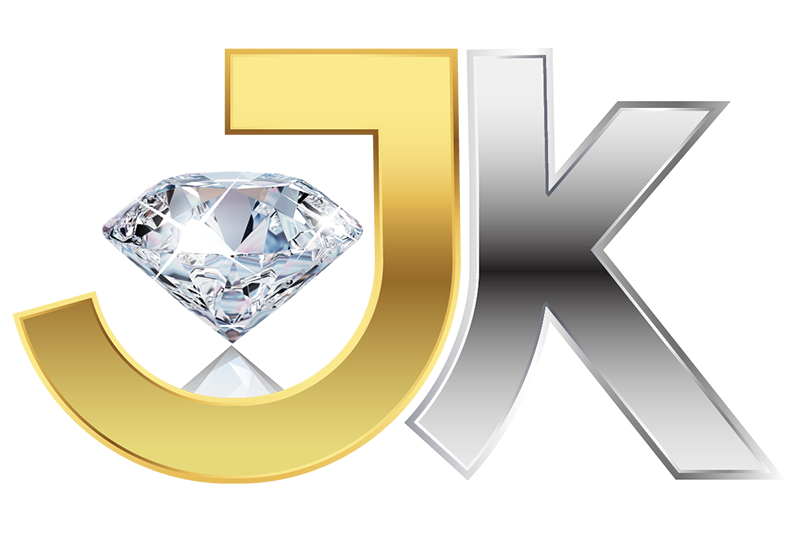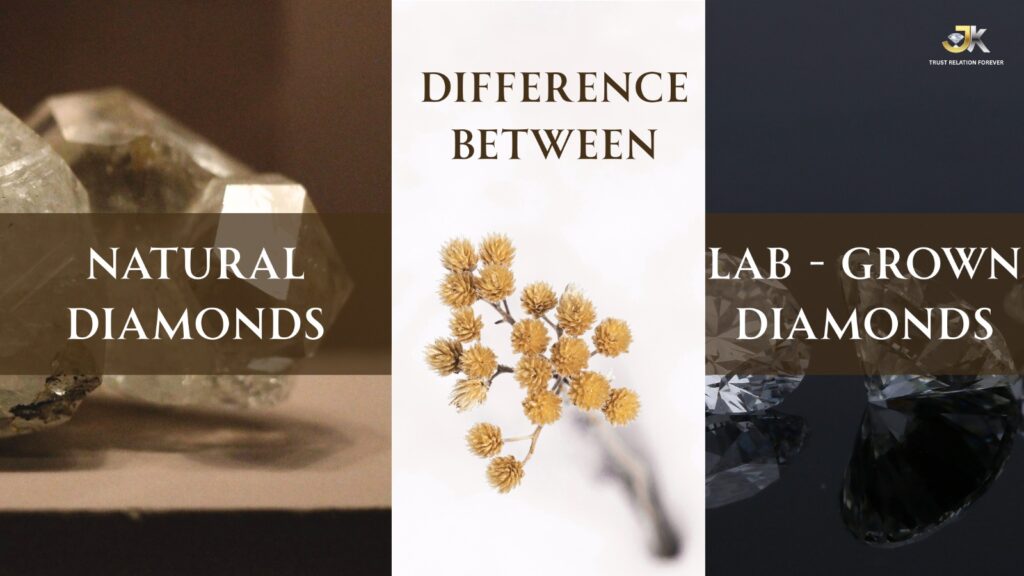For centuries, natural diamonds have been the epitome of luxury and enduring love. But in recent years, a new player has entered the market: lab-grown diamonds. With their increasing popularity, it’s essential to understand what truly sets these two types of diamonds apart.
Facts: Identical Twins, Different Birthplaces
The most crucial fact to grasp is this: lab-grown diamonds are real diamonds. They possess the exact same chemical, physical, and optical properties as their natural counterparts. This means they sparkle, shine, and have the same hardness (10 on the Mohs scale) as diamonds mined from the Earth. Even expert gemologists can’t tell them apart without specialized equipment that can detect minute trace elements (like nitrogen in natural diamonds) or subtle growth patterns that differ due to their formation method.
The core difference lies in their origin:
- Natural Diamonds: Formed over billions of years deep within the Earth’s mantle under immense heat and pressure, then brought to the surface through volcanic activity. Each is a unique product of nature’s geological processes.
- Lab-Grown Diamonds: Created in controlled laboratory environments using advanced technological processes like High-Pressure/High-Temperature (HPHT) or Chemical Vapor Deposition (CVD). These methods mimic the natural conditions, but accelerate the process from billions of years to a few weeks or months.
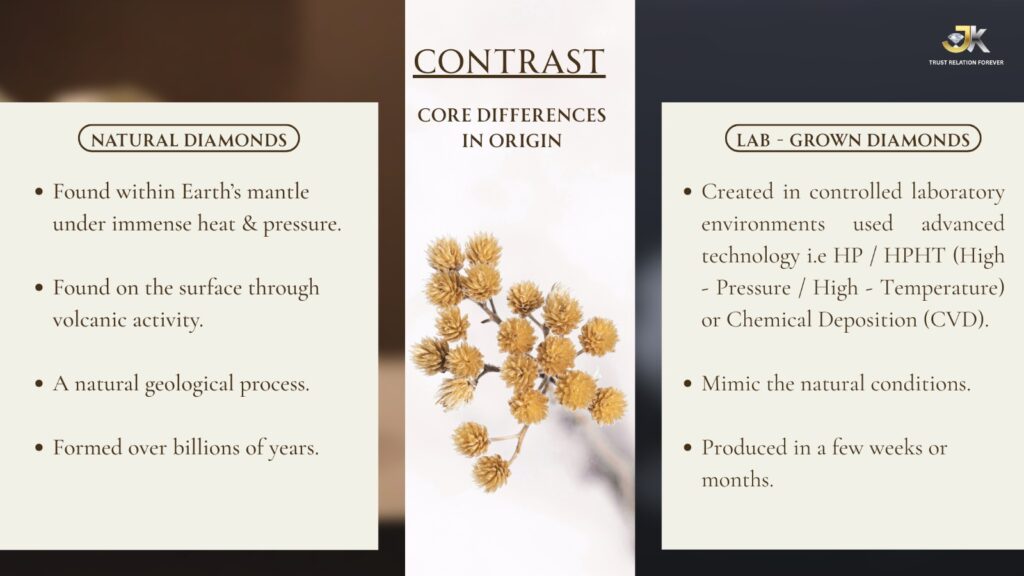
Ethical Concerns: A Shifting Landscape
This is where the conversation often gets passionate.
- Natural Diamonds: Historically, the natural diamond industry has faced criticism regarding “conflict diamonds” (or “blood diamonds”) which funded armed conflicts. While the Kimberley Process Certification Scheme aims to prevent this, ensuring transparency in the supply chain remains a complex challenge. There are also environmental concerns related to mining, including land disruption, habitat destruction, and water usage. However, many reputable natural diamond companies are committed to responsible sourcing and sustainable practices.
- Lab-Grown Diamonds: Often promoted as a more ethical and sustainable alternative. Since they are created in controlled lab settings, they are inherently “conflict-free.” Their environmental impact is generally considered lower than mining, as they avoid large-scale land excavation and reduce water consumption. However, the energy required for their production can still be significant, and the environmental footprint varies depending on the energy sources used by the specific lab. Many producers are working towards using renewable energy to further reduce this impact.
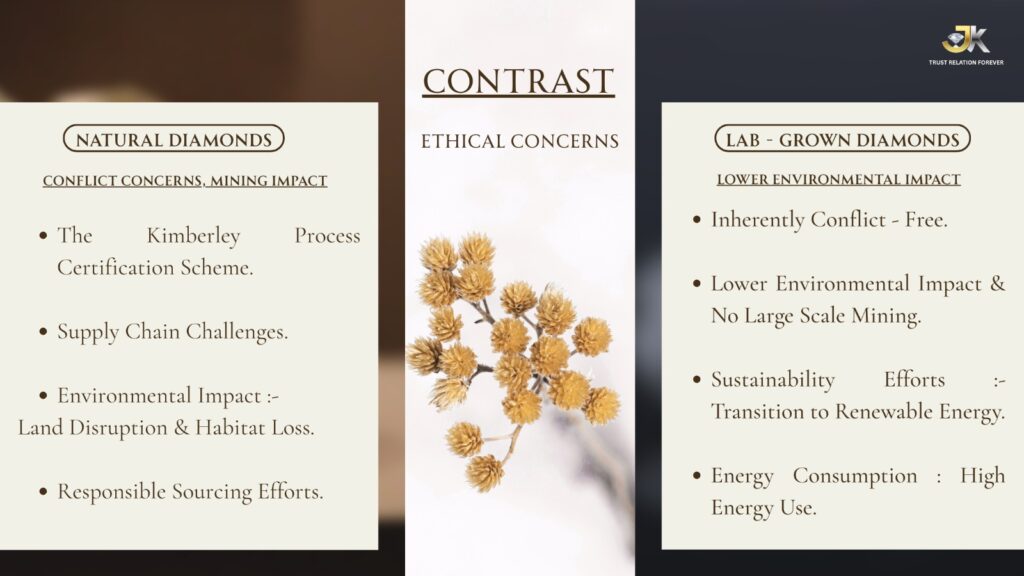
Pricing: A Significant Divide
This is typically the most noticeable difference for consumers.
- Natural Diamonds: Due to their rarity, the extensive mining process, and a controlled supply, natural diamonds generally command a significantly higher price. Their value is influenced by supply and demand, and prices have historically shown stability or appreciation over time, especially for rarer, high-quality stones.
- Lab-Grown Diamonds: Are considerably more affordable, often costing 60% to 80% less than a natural diamond of comparable carat weight and quality. This is primarily because they can be produced in increasing quantities as technology advances, reducing production costs and eliminating many of the complexities and expenses associated with mining. This affordability allows consumers to purchase a larger or higher-quality diamond for the same budget.
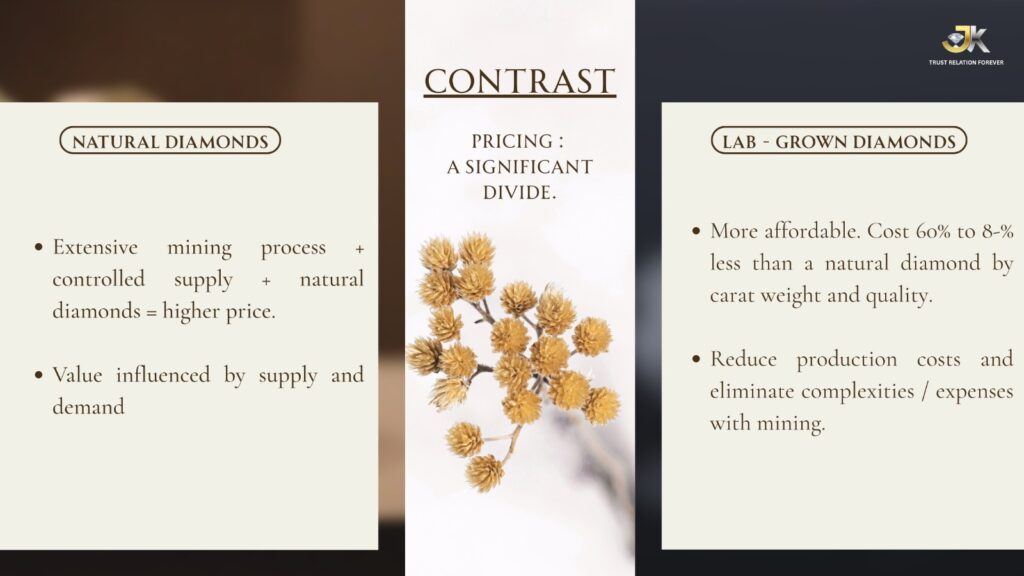
Resale Value: The Investment Question
When considering resale, the picture changes significantly.
- Natural Diamonds: Tend to retain a portion of their value over time, especially larger, high-quality, and rare natural diamonds. While you typically won’t get your full purchase price back, they are seen by some as an investment or at least a store of value. The limited supply and historical demand contribute to this.
- Lab-Grown Diamonds: Currently have a significantly lower resale value compared to natural diamonds. As they can be mass-produced, the supply is not limited, and prices for newly manufactured lab-grown diamonds are continually decreasing. This means that if you try to resell a lab-grown diamond, you can expect to receive only a small fraction of its original purchase price, sometimes as low as 10-30%. For those looking for an investment, lab-grown diamonds are generally not recommended.
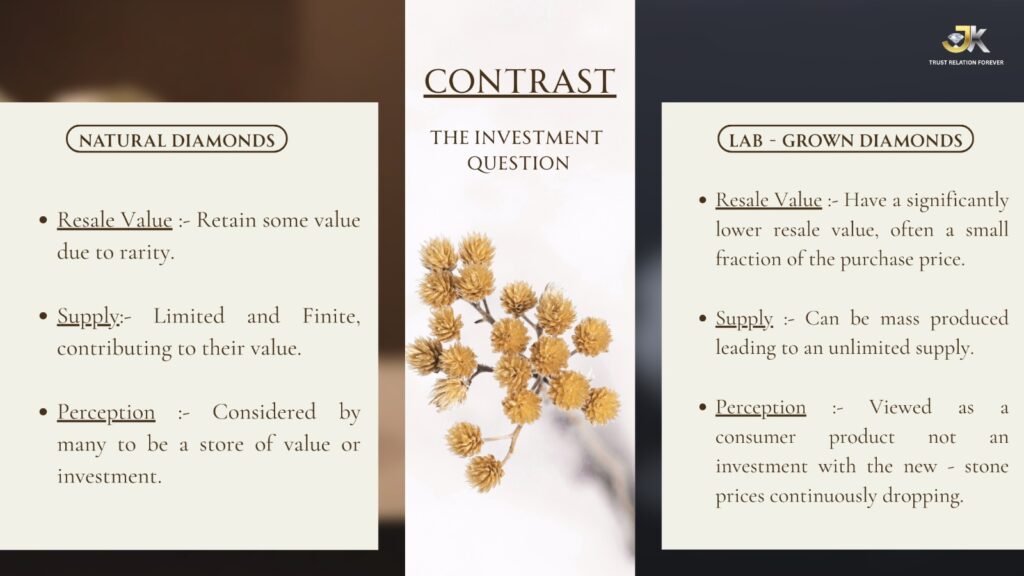
Making Your Choice
The decision between a natural and lab-grown diamond ultimately comes down to personal priorities. If you value tradition, rarity, and the potential for long-term value retention, a natural diamond might be your choice. If affordability, ethical sourcing (without direct mining impact), and getting a larger, equally brilliant stone are your primary concerns, a lab-grown diamond offers a compelling alternative. Both are beautiful, durable, and truly diamonds.
Stay updated on the latest JK Sons postings by following us on Instagram.
https://www.instagram.com/j_ksons/
https://x.com/jksonsdiamond?t=a4_K1Uej1BwNCXt63jmEMw&s=08
https://www.youtube.com/@JKSons-q4x
https://www.facebook.com/share/19fYjZtEZf/
https://www.linkedin.com/in/jk-sons-a8005832b?utm_source=share&utm_campaign=share_via&utm_content=profile&utm_medium=android_app

